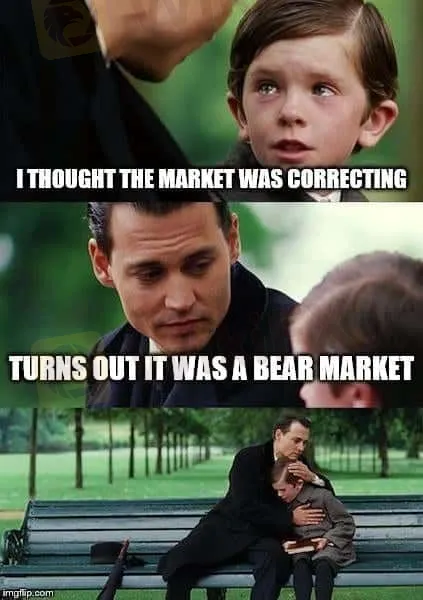简体中文
繁體中文
English
Pусский
日本語
ภาษาไทย
Tiếng Việt
Bahasa Indonesia
Español
हिन्दी
Filippiiniläinen
Français
Deutsch
Português
Türkçe
한국어
العربية
More Approach to Not Fail During Bear Market Pt.2
Abstract:Previously in part one, the article suggested two approaches to survive during bear markets. Those were dollar cost averaging and calibrated risk. This article continues the second and the third part of the tricks to deal during the bear market. The third is diversifying but without disengaging. Here is the reason why.

During bear markets, the growth of stocks is extremely high than the stocks value. As a result, the lower-risk stocks generate long-term returns which are the same to those riskier ones. Some diversification into value or when portfolios fall in speculative stocks due to the bear market still is still able to pay dividends. Plus, it could act longer after the bear markets cool off. In a diversified portfolio cash has a significant role. Although it does not create more yield, the cash reserves buying power that could help create opportunities during bear markets.
However, it is not suggested to place more of your retirement account into cash during bear markets. This is because you will encounter difficult uncertainties like when and where you should redeploy it. Finally, you could also face diminished long-term returns. Planning market timing is indeed hard. Meanwhile, trying your luck in the market seems to put you in a poor condition.
Finally, the last trick is you should hedge and speculate with options. Based on the data only a few traders could finally make money. Meanwhile, the vast majority of retail investors face a lot that economists believe that they just do it for gambling. In this case, you could put options. In other words, it could be putting spreads. This is for those buying after the bear market. The function of it could lead to the use of a hedge long position.

Disclaimer:
The views in this article only represent the author's personal views, and do not constitute investment advice on this platform. This platform does not guarantee the accuracy, completeness and timeliness of the information in the article, and will not be liable for any loss caused by the use of or reliance on the information in the article.
Read more

Forex Hedging: Is It a Trader’s Safety Net or Just an Illusion?
In the volatile world of forex trading, risk is inevitable. One widely used strategy is forex hedging, which is a useful technique designed not to eliminate risk entirely, but to reduce its potential impact. As global economic uncertainty persists, understanding how hedging works could be an essential addition to a trader’s toolkit.

Thinking of Investing? Read Must-Know Facts About Funding pips!
When you check the internet for Funding Pips, you'd be surprised to know it's filled with praise for Funding Pips but often lacks the real facts that traders need. Everything that seems too good to be true should always be verified first. It could be Fraud . So, we conducted research and collected several facts you must know about Funding Pips.

OctaFX Back in News: ED Attaches Assets Worth INR 134 Cr in Forex Scam Case
The Enforcement Directorate (ED) in Mumbai has attached assets worth around INR 131.45 crore. This included a luxury yacht and residential properties in Spain. Read this interesting story.

Oil Prices Stay Firm on Solid US Jobs Data
Oil prices stayed firm this week as the US labour department posted a better-than-expected payroll data in June 2025. Read this news in detail.
WikiFX Broker
Latest News
He Thought He Earned RM4 Million, But It Was All a Scam
CryptoCurrency Regulations in India 2025 – Key Things You Should Know
OctaFX Back in News: ED Attaches Assets Worth INR 134 Cr in Forex Scam Case
Trump inaugural impersonators scammed donors out of crypto, feds say
Ethereum is powering Wall Street's future. The crypto scene at Cannes shows how far it's come
Forex Hedging: Is It a Trader’s Safety Net or Just an Illusion?
US debt is now $37trn – should we be worried?
OPEC+ members agree larger-than-expected oil production hike in August
Dukascopy Ends EOS/USD Trading Amid Liquidity Issues
FIBO Group MT5 Cent Account with Ultra-Leverage up to 1:5000 for Beginners
Currency Calculator


